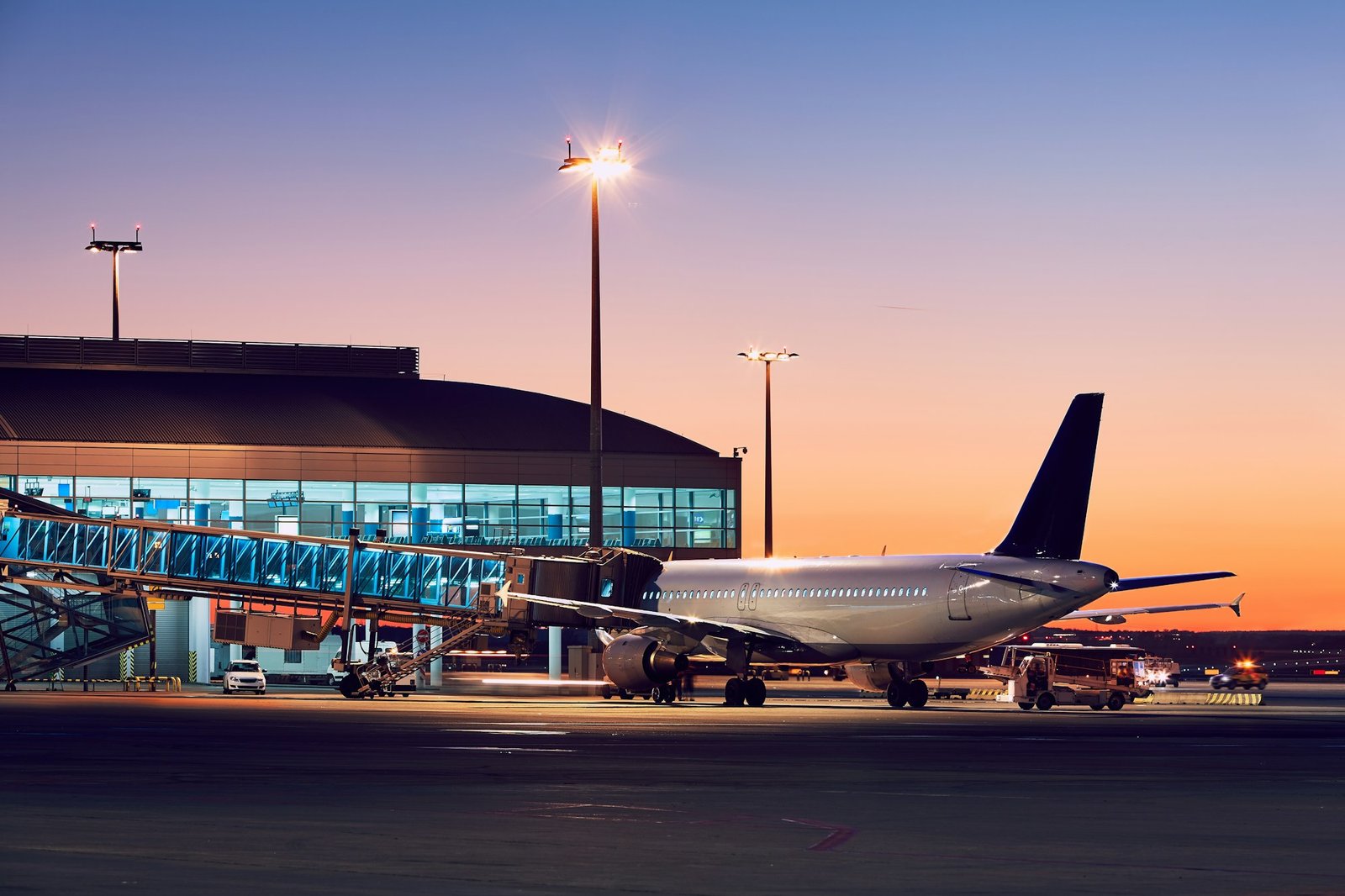Purchasing Your Ticket: Tips and Tricks to Save Money
When flying with a low-cost UK carrier, securing the best deal often begins with strategic planning and timing. A key tactic is to book your ticket early. The earlier you reserve your seat, the more likely you are to benefit from lower prices. Most low-cost carriers release their flight schedules several months in advance, and fares tend to be cheaper during this initial period. Therefore, keeping an eye on those release dates can prove to be a wise decision.
Utilizing price comparison websites is another indispensable method for finding the best deals. Websites such as Skyscanner, Kayak, and Google Flights can help you compare prices from various airlines, providing an overarching view of the available options. Setting up fare alerts on these platforms can further enhance your ability to snatch the best deals. Fare alerts notify you when there’s a significant drop in prices, enabling you to act quickly and secure a budget-friendly fare.
Flexibility with travel dates and times can also result in considerable savings. Prices can vary substantially depending on the day of the week and time of day. For instance, mid-week flights and those departing early in the morning or late at night are often less expensive. Therefore, adjusting your travel plans by a day or two could lead to notable savings.
Booking directly through the airline’s website is another way to potentially cut costs. Although third-party booking sites may occasionally offer better prices, airlines sometimes have exclusive deals and insider promotions on their own websites. Moreover, booking directly can provide added benefits like better customer service and more straightforward dispute resolution if issues arise.
Finally, take advantage of seasonal promotions and flash sales. Low-cost UK carriers frequently run special promotions during certain times of the year, offering significantly reduced fares for a limited period. Signing up for airline newsletters and following them on social media can help you stay informed about these limited-time offers so you can act quickly when a good deal arises.
Understanding Baggage Allowances: Carry-On and Hold Luggage
Flying with low-cost UK carriers often requires a keen understanding of their baggage policies to avoid unexpected fees and ensure a smooth travel experience. These airlines typically have specific rules regarding carry-on and hold luggage allowances, which are pivotal to grasp before your journey begins.
Carry-on luggage allowances usually include one main item and sometimes an additional small personal item, such as a handbag or laptop bag. The main carry-on item usually must adhere to strict size and weight limits, generally falling within the dimensions of 55x40x20 cm and a weight limit of around 10 kg. However, these specifications can vary slightly between carriers, so it’s essential to verify exact details with your chosen airline.
Hold luggage is another area where policies diverge significantly. Low-cost airlines often charge separately for checked baggage, with fees that increase progressively the closer to your flight’s departure date or if paying at the airport rather than online. The weight limit for checked bags typically ranges from 15 to 23 kg, with additional charges for exceeding these limits or for each extra bag. Opting for pre-purchase options for hold luggage online can provide significant savings compared to last-minute airport fees.
To mitigate additional costs, efficient packing is key. Prioritize packing versatile clothing items that layer well, and roll clothes to maximize space within your carry-on. Place heavier items at the bottom of your bag to aid in weight distribution. Utilize every nook and cranny for packing small items and consider wearing your bulkiest clothing and shoes during travel to preserve precious carry-on space.
Additionally, understanding what constitutes a personal belonging is crucial. Items such as coats, umbrellas, and duty-free purchases often do not count towards your main carry-on allowance and can provide supplementary space. Strategically packing your personal belongings can maximize your carry-on capacity without incurring extra costs.
In essence, mastering the baggage policies of low-cost UK carriers involves preemptive planning and astute packing habits. By adhering to size and weight guidelines and capitalizing on personal item allowances, travelers can avoid unnecessary fees while making the most of their cabin space. Keeping abreast of these details sets the foundation for a seamless and cost-effective travel experience.
Choosing the Best Seats: Comfort and Convenience on a Budget
Selecting the right seat can significantly enhance your travel experience when flying with a low-cost UK carrier. One of the first decisions you’ll need to make is whether to pre-book your seat or go for random allocation. Pre-booking allows you to choose specific seating arrangements that meet your needs, often for a small fee. It ensures you have control over your comfort and avoids the uncertainty of random allocation. However, skipping this option can save you money if you’re less particular about where you sit.
If legroom is a priority, consider booking seats in the exit rows or near the bulkhead. These seats typically offer extra legroom and can make a significant difference on longer flights. However, be aware that exit row seats often come with additional costs. It’s essential to weigh these expenses against the added comfort, especially if you’re looking to travel on a budget.
When selecting your seat, also pay attention to those you might want to avoid. Seats near restrooms can be less desirable due to increased foot traffic and potential odors. Similarly, seats that don’t recline, often found in the last row, can make for an uncomfortable journey. Carefully checking the airline’s seating plan, usually available on its website, can help you identify these less than ideal spots.
For families or groups traveling together, pre-booking seats is highly advisable to ensure everyone sits together. Many low-cost carriers charge an additional fee for this service, but the peace of mind it provides is often worth the expense. Likewise, some airlines offer family seating zones, which might be more convenient if you’re traveling with young children.
In conclusion, making informed choices about seat selection can greatly enhance your flight experience with a low-cost UK carrier. By pre-booking the right seats, identifying those with extra legroom, and steering clear of problematic areas, you can maximize both comfort and convenience while still adhering to a budget.“`html
Additional Fees and Onboard Services: What to Expect
Flying with a low-cost UK carrier often means encountering various additional fees that can impact the overall cost of your trip. One of the most common charges is for priority boarding, which allows you to board the aircraft ahead of other passengers. This service can provide critical benefits, especially for those traveling with carry-on luggage, as it increases the likelihood of finding space in the overhead compartments. Typically, the fee for priority boarding ranges between £5 and £12, depending on the route and the specific airline.
Seat selection is another area where additional fees come into play. Standard seats may be free or inexpensive, but if you prefer extra legroom or a seat in the front rows of the aircraft, expect to pay a premium. Prices for seat selection can vary widely, from £4 for a standard seat to £30 for premium options. It’s essential to book your preferred seat as early as possible to ensure availability and potentially save money.
Onboard food and beverage options on low-cost UK carriers tend to be limited compared to full-service airlines. Generally, you will find a selection of snacks, sandwiches, and beverages available for purchase. The cost of these items can be relatively high, with snacks priced around £2-£5 and sandwiches costing between £4-£7. Beverage prices also vary, with non-alcoholic drinks often costing £1.50-£3 and alcoholic beverages ranging from £4-£6. While the quality of the food can be satisfactory, it’s advisable to bring your own snacks, especially for longer flights. Be sure to check the airline’s policy beforehand to ensure compliance with any restrictions.
In-flight entertainment and Wi-Fi availability can significantly enhance your travel experience. However, not all low-cost carriers provide these services. When available, Wi-Fi generally comes at an extra cost, with prices ranging from £5 for an hour’s access to £15 for the entire flight. Similarly, in-flight entertainment systems, if offered, may incur additional charges, typically around £3-£7. To avoid unexpected expenses, check the airline’s website for specifics on entertainment and Wi-Fi options before your trip.





